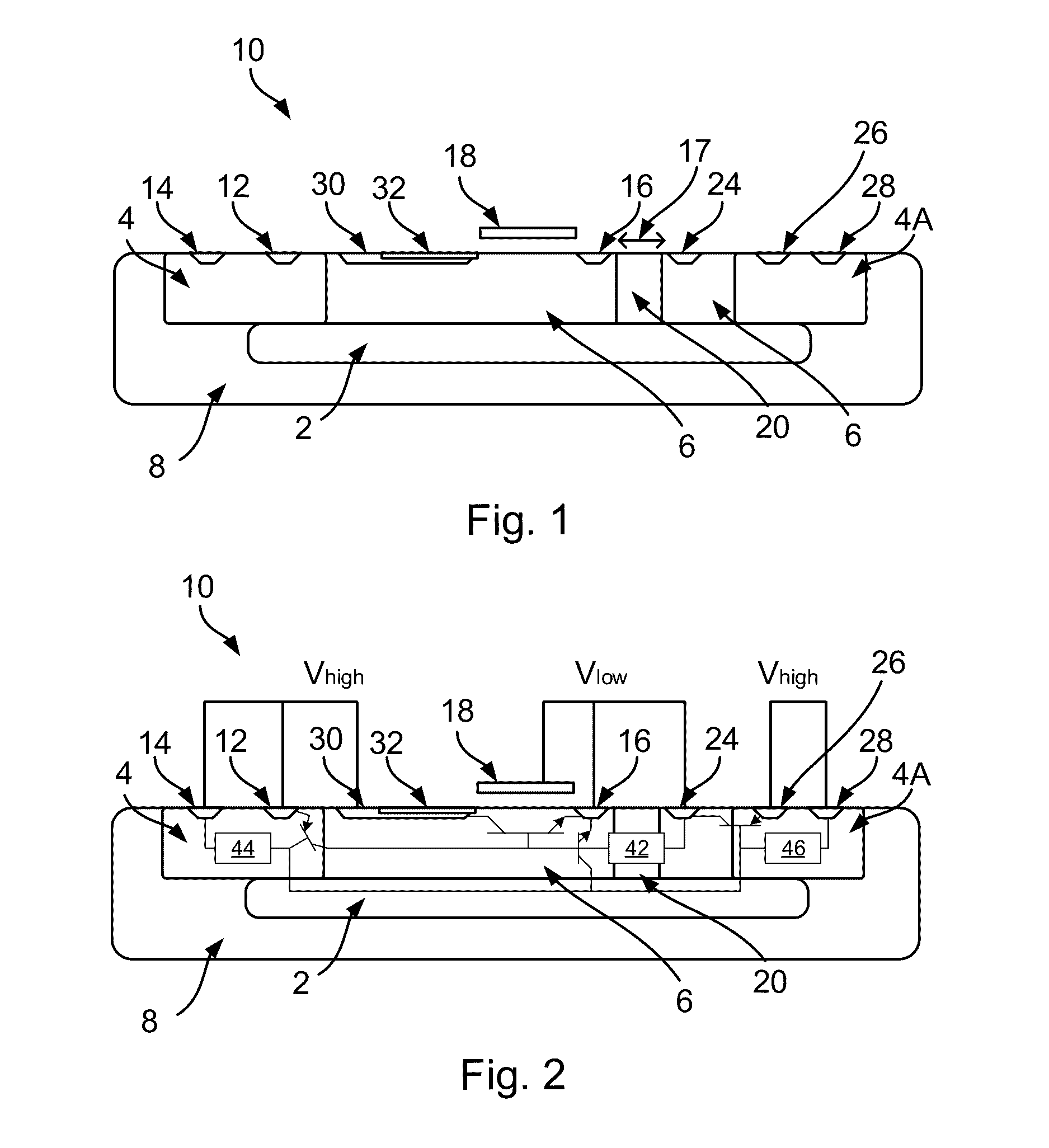Electrostatic Discharge Protection Device Comprising a Silicon Controlled Rectifier
a technology of electronic discharge protection and rectifier, which is applied in the direction of semiconductor devices, semiconductor/solid-state device details, diodes, etc., can solve the problems of latching during testing or thereafter, early trigger of mos devices is unwanted, and trigger voltage too high to be usable in many designs, etc., to achieve higher resistivity, reduce trigger voltage, and reduce the effect of trigger voltag
- Summary
- Abstract
- Description
- Claims
- Application Information
AI Technical Summary
Benefits of technology
Problems solved by technology
Method used
Image
Examples
Embodiment Construction
[0043]Embodiments of the present disclosure are described in the following with reference to the accompanying drawings.
[0044]Embodiments of this disclosure may provide an electrostatic discharge (ESD) protection device that comprises a silicon controlled rectifier (SCR). The device can be provided in a semiconductor substrate, such as a silicon substrate.
[0045]The following embodiments are described in the context of devices for which the first conductivity type is n-type and the second conductivity type is p-type. Nevertheless, as noted above, it is envisaged that the first conductivity type may be p-type and the second conductivity type may be n-type.
[0046]The device includes region having a first conductivity type (in the examples described below, a first n-type region) located in the substrate. The device includes region having a second conductivity type (in the examples described below, a first p-type region), which is also located in the substrate. The region having the second...
PUM
 Login to View More
Login to View More Abstract
Description
Claims
Application Information
 Login to View More
Login to View More - R&D
- Intellectual Property
- Life Sciences
- Materials
- Tech Scout
- Unparalleled Data Quality
- Higher Quality Content
- 60% Fewer Hallucinations
Browse by: Latest US Patents, China's latest patents, Technical Efficacy Thesaurus, Application Domain, Technology Topic, Popular Technical Reports.
© 2025 PatSnap. All rights reserved.Legal|Privacy policy|Modern Slavery Act Transparency Statement|Sitemap|About US| Contact US: help@patsnap.com



